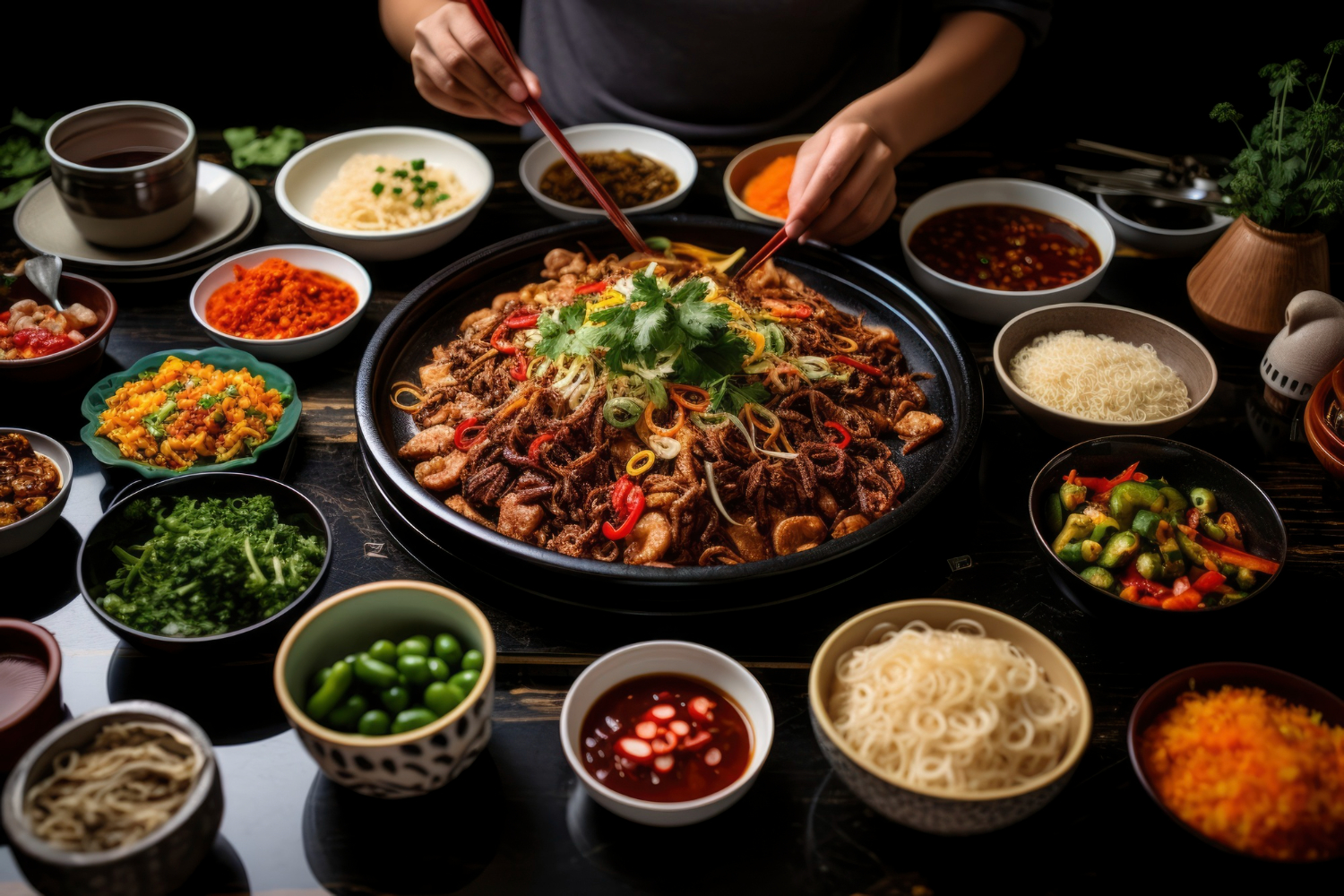Introduction to Buší
Buší is a traditional dish that comes from a place called Hungary. It’s a special food that holds a lot of meaning for the people there. Buší has been around for a long time, passed down from generation to generation. It’s not just food; it’s part of their culture and heritage. People in Hungary celebrate special occasions with Buší, showing how important it is to them. It’s more than just a meal; it’s a symbol of their identity and history.
Historical Background
Buší has a rich history that traces back through the centuries in Hungary. It has evolved over time, adapting to changes in culture and culinary practices. Traditional practices associated with Buší reflect its deep-rooted significance in Hungarian heritage. From its humble beginnings to its modern interpretations, Buší continues to be a cherished part of Hungarian culinary tradition, connecting generations through its flavors and customs.
Cultural Significance
Buší plays a pivotal role in local traditions and celebrations within Hungarian communities. It holds a special significance, often being prepared and shared during festive occasions and gatherings. In community settings, Buší serves as a symbol of unity and togetherness, bringing people together to celebrate their shared heritage. Its presence at social gatherings fosters a sense of belonging and camaraderie, reinforcing cultural bonds and traditions among friends and family members.
Types of Buší
Buší comes in various forms, each with its own unique characteristics and flavors. Regional variations in Buší preparations add to its diversity and appeal.
1. Varieties of Buší:
-
- Traditional Buší: Made with staple ingredients like flour, water, and sometimes eggs, resulting in a simple yet hearty dish.
- Sweet Buší: Enhanced with sugar or honey, often served as a dessert or a sweet treat.
2. Regional Variations:
-
- Northern Buší: Known for its thicker consistency and hearty texture, often served with savory toppings like cheese or sour cream.
- Southern Buší: Features a lighter, more delicate texture, often accompanied by fruit preserves or compote.
- Eastern Buší: Incorporates local spices and flavors, adding a unique twist to the traditional recipe.
Ingredients and Preparation
Buší is made using simple yet essential ingredients, and its preparation involves straightforward steps.
1. Key Ingredients:
-
- Flour: The primary ingredient, used to create the dough base for Buší.
- Water: Used to mix with flour to form the dough.
- Eggs (optional): Some recipes may include eggs to enhance the texture and richness of Buší.
2. Step-by-Step Guide:
-
-
Step 1: Mixing the Dough:
- In a mixing bowl, combine flour and water to form a smooth dough. Adjust the consistency as needed by adding more flour or water.
- If using eggs, beat them separately and then incorporate them into the dough mixture until well combined.
-
Step 2: Shaping the Buší:
- Divide the dough into smaller portions and shape them into desired shapes, such as rounds or rectangles.
- Use your hands or a rolling pin to flatten the dough to the desired thickness.
-
Step 3: Cooking the Buší:
- Heat a skillet or griddle over medium heat and lightly grease it with oil or butter.
- Carefully place the shaped Buší dough onto the heated surface and cook until golden brown on both sides, flipping halfway through cooking.
-
Step 4: Serving:
- Once cooked, remove the Buší from the skillet and transfer them to a serving plate.
- Buší can be served warm or at room temperature, depending on personal preference.
- Enjoy Buší on its own or with accompaniments such as sour cream, cheese, or jam.
-
Health Benefits
While Buší is primarily enjoyed for its cultural significance and delicious taste, it also offers some nutritional value and potential health benefits.
1. Nutritional Value of Buší Ingredients:
-
- Flour: Provides carbohydrates, which are the body’s main source of energy. It also has a little bit of protein and fiber.
- Eggs (if included): Rich in protein, vitamins, and minerals, including vitamin D, vitamin B12, and selenium.
- Water: Essential for hydration and overall bodily functions.
2. Potential Health Benefits of Consuming Buší:
-
- Energy Boost: The carbohydrates from flour provide a quick source of energy, making Buší a satisfying snack or meal option.
- Protein Intake: If eggs are included in the recipe, Buší can contribute to your daily protein needs, supporting muscle growth and repair.
- Nutrient Intake: Buší ingredients contain essential vitamins and minerals that are important for overall health and wellbeing.
- Satiety: The combination of carbohydrates, protein, and fats in Buší can help keep you feeling full and satisfied, potentially aiding in weight management.
- Enjoyment and Mental Health: Sharing and enjoying traditional foods like Buší with loved ones can contribute to feelings of happiness and wellbeing, supporting mental health.
Modern Adaptations
Buší has evolved over time to adapt to modern tastes and culinary trends, resulting in contemporary twists on traditional recipes.
1. Evolution of Buší in Modern Times:
-
- Innovation in Ingredients: Modern adaptations of Buší may incorporate alternative flours, such as whole wheat or gluten-free options, catering to dietary preferences and restrictions.
- Health-Conscious Modifications: With a growing emphasis on health and wellness, modern Buší recipes may include substitutions for traditional ingredients, such as using natural sweeteners instead of refined sugars.
- Fusion Flavors: Buší recipes may draw inspiration from global cuisines, incorporating spices, herbs, and flavor combinations from diverse culinary traditions.
- Convenience and Accessibility: Modern Buší recipes may feature simplified preparation methods or pre-packaged ingredients, making it easier for busy individuals to enjoy this traditional dish.
2. Contemporary Twists on Traditional Buší Recipes:
-
- Gourmet Variations: Chefs and home cooks alike may experiment with upscale ingredients and presentation techniques to elevate the classic Buší recipe to a gourmet level.
- Flavor Infusions: Contemporary Buší recipes may feature inventive flavor combinations, such as savory-sweet pairings or unexpected ingredient additions, to add excitement and interest to the dish.
- Creative Serving Suggestions: Modern Buší may be served in unconventional ways, such as bite-sized portions for appetizers or as a base for innovative toppings and accompaniments.
- Health-Conscious Options: Health-conscious individuals may create Buší recipes that are lower in calories, fat, or sugar, using alternative ingredients and cooking methods to achieve a healthier twist on the traditional dish.
Buší in Popular Culture
Buší has made its mark beyond the kitchen, appearing in various forms of popular culture, including literature, music, art, and media and entertainment.
1. References to Buší in Literature, Music, and Art:
-
- Literary Mentions: Buší may be referenced in novels, poems, or short stories, serving as a symbol of Hungarian identity or as a motif in storytelling.
- Musical Inspirations: Songs or compositions may mention Buší in their lyrics or titles, celebrating its cultural significance or evoking nostalgic memories associated with the dish.
- Artistic Depictions: Paintings, sculptures, or other visual artworks may feature Buší as a subject, capturing its essence and cultural importance through artistic expression.
2. Portrayal in Media and Entertainment:
-
- Culinary Shows: Buší may be featured on cooking programs or documentaries exploring traditional Hungarian cuisine, showcasing its preparation and cultural significance to a global audience.
- Film and Television: Buší may make appearances in movies or television shows set in Hungary or featuring Hungarian characters, adding authenticity to the portrayal of local culture and customs.
- Social Media: Buší enthusiasts may share their experiences with the dish on social media platforms, posting photos, recipes, and anecdotes related to their love for this traditional delicacy.
Celebrations and Festivals
Buší holds a central role in various events and festivals throughout Hungary, where it is celebrated with enthusiasm and tradition.
1. Events or Festivals where Buší Plays a Central Role:
-
- Harvest Festivals: During harvest celebrations, Buší is often prepared and shared among community members, symbolizing the abundance of the harvest season and fostering a sense of gratitude and togetherness.
- Cultural Festivals: Hungarian cultural festivals frequently feature Buší as a staple dish, allowing attendees to indulge in this beloved traditional food while immersing themselves in the country’s rich cultural heritage.
- Family Gatherings: Buší is a common sight at family gatherings and celebrations, where it serves as a comforting and familiar dish that brings generations together to bond over shared memories and traditions.
2. Traditions Associated with Buší During Festivities:
-
- Preparation Rituals: The process of making Buší often involves time-honored rituals and techniques passed down through generations, with family members coming together to knead the dough, shape the Buší, and cook it to perfection.
- Sharing and Generosity: Buší is typically prepared in large quantities during festivals and celebrations, reflecting the spirit of generosity and hospitality that characterizes Hungarian culture. It is often shared with friends, neighbors, and even strangers as a gesture of goodwill and community spirit.
- Symbolism and Significance: Buší holds deep symbolic meaning during festivities, representing not only nourishment and sustenance but also cultural pride and heritage. Its presence at celebrations reinforces cultural identity and strengthens bonds among participants.
Regional Variations
Buší exhibits diverse regional styles and preferences across different parts of Hungary, each with its own unique features and cultural significance.
1. Different Regional Styles and Preferences for Buší:
-
- Northern Region: In northern Hungary, Buší tends to have a thicker consistency and may be served with savory toppings such as cheese, sour cream, or bacon. It is often enjoyed as a hearty and satisfying meal, particularly during colder months.
- Southern Region: Buší in the southern part of Hungary is characterized by its lighter texture and may be accompanied by sweet toppings such as fruit preserves or compote. It is often served as a dessert or a sweet treat during festive occasions.
- Eastern Region: Buší in the eastern region of Hungary may feature unique flavor combinations and spices influenced by neighboring culinary traditions. It may also incorporate locally sourced ingredients, reflecting the region’s agricultural heritage.
2. Unique Features of Buší in Various Cultural Contexts:
-
- Ethnic Influences: In regions with significant ethnic minority populations, such as the Székelys in Transylvania, Buší may be prepared with variations that reflect the cultural heritage and culinary traditions of these communities.
- Festive Customs: Buší is often associated with specific festivals and celebrations unique to each region. For example, in some areas, Buší may be a staple dish during Christmas or Easter celebrations, while in others, it may be enjoyed during local fairs and harvest festivals.
- Seasonal Ingredients: Regional variations of Buší may incorporate seasonal ingredients that are abundant in specific areas, such as wild herbs, mushrooms, or fruits, adding a seasonal flair to the dish and highlighting the connection between food and nature.
Tips For Enjoying Buší
Enjoying Buší to its fullest involves considering serving suggestions, accompaniments, and best practices to enhance the experience of its unique flavors.
1. Serving Suggestions and Accompaniments:
-
- Traditional Pairings: Serve Buší with classic accompaniments such as sour cream, cheese, or fruit preserves to complement its flavors and textures.
- Savory Options: Pair savory Buší variations with toppings like bacon, ham, or sautéed vegetables for a satisfying meal.
- Sweet Treats: For sweet Buší varieties, consider serving with a dusting of powdered sugar, a drizzle of honey, or a dollop of whipped cream for an indulgent dessert.
- Creative Combos: Get creative with toppings and accompaniments by experimenting with unique flavor combinations and seasonal ingredients to customize your Buší experience.
2. Best Practices for Experiencing the Flavors of Buší:
-
- Freshness Matters: Enjoy Buší when it’s freshly prepared and still warm for the best taste and texture.
- Texture Contrast: Appreciate the contrast between the crispy exterior and soft interior of Buší by savoring each bite slowly.
- Mindful Eating: Take time to savor the flavors and aromas of Buší, paying attention to its unique taste profile and the nuances of its ingredients.
- Sharing Tradition: Enjoy Buší in the company of family and friends, embracing the tradition of sharing food as a way to connect and celebrate together.
Where to Find Buší
Buší can be found in various locations, including restaurants, markets, and homes, where it is commonly served or sold to enthusiasts of Hungarian cuisine.
1. Locations where Buší is Commonly Served or Sold:
-
- Local Bakeries: Many bakeries in Hungary offer freshly baked Buší, allowing customers to purchase it as a convenient snack or meal option.
- Traditional Restaurants: Hungarian restaurants, particularly those specializing in traditional cuisine, often feature Buší on their menus as a staple dish, allowing diners to enjoy an authentic culinary experience.
- Street Food Stalls: In bustling marketplaces and street food festivals, vendors may sell freshly prepared Buší, providing a quick and delicious option for hungry visitors.
2. Restaurants or Markets Known for their Quality Buší:
-
- Historic Cafés: Some historic cafés in Hungary have been serving Buší for generations, earning a reputation for their quality and authenticity in preparing this beloved dish.
- Specialty Food Markets: Specialty food markets, particularly those focusing on artisanal and traditional products, may offer high-quality Buší made by local producers, allowing customers to taste the difference in craftsmanship and ingredients.
- Cultural Festivals: During cultural festivals and events celebrating Hungarian heritage, visitors can often find vendors selling Buší, providing an opportunity to sample and purchase this iconic dish in a festive atmosphere.
DIY Buší
Making Buší at home is a rewarding experience that allows you to enjoy this traditional Hungarian dish in the comfort of your own kitchen. Here are some instructions and tips to help you get started:
1. Instructions for Making Buší at Home:
Ingredients:
-
- 2 cups all-purpose flour
- 1 cup water
- Optional: 1 egg (for added richness)
Instructions:
- In a mixing bowl, combine the flour and water (and egg, if using) to form a smooth dough. Change the thickness by adding more flour or water if necessary.
- Knead the dough on a lightly floured surface until it becomes elastic and pliable.
- Divide the dough into smaller portions and shape them into rounds or rectangles, flattening them to your desired thickness.
- Heat a skillet or griddle over medium heat and lightly grease it with oil or butter.
- Carefully place the shaped Buší dough onto the heated surface and cook until golden brown on both sides, flipping halfway through cooking.
- Once cooked, remove the Buší from the skillet and transfer them to a serving plate.
- Serve the Buší warm or at room temperature, accompanied by your favorite toppings or accompaniments.
2. Tips for Sourcing Authentic Ingredients:
-
- Local Markets: Visit local markets or specialty food stores in your area to find authentic Hungarian ingredients, such as flour and eggs, that are commonly used in Buší recipes.
- Online Retailers: Explore online retailers that specialize in Hungarian food products, where you can find a wide range of authentic ingredients shipped directly to your doorstep.
- Farmers’ Markets: Support local farmers and producers by sourcing fresh, locally grown ingredients for your Buší, such as organic flour and farm-fresh eggs.
- Community Connections: Reach out to Hungarian communities or cultural organizations in your area for recommendations on where to find authentic ingredients and connect with fellow Buší enthusiasts.
Famous Buší Recipes
While Buší is a beloved traditional dish in Hungary, there are also notable recipes from renowned chefs or cooks that offer unique variations on this classic dish. Here are some examples:
1. Chef’s Signature Buší:
-
- Renowned chefs may put their own twist on Buší, incorporating innovative ingredients or techniques to elevate the dish to gourmet status. For example, a chef might add herbs or spices to the dough or experiment with different toppings and fillings to create a signature Buší recipe that reflects their culinary style.
2. Celebrity Chef Buší Toppings:
-
- Celebrity chefs may share their favorite Buší toppings or accompaniments, inspiring home cooks to get creative in the kitchen. For example, a celebrity chef might recommend serving Buší with caramelized onions, goat cheese, and fresh herbs for a sophisticated flavor profile.
3. Traditional Buší with a Modern Twist:
-
- Some cooks may offer variations on classic Buší dishes that incorporate modern cooking techniques or global flavors. For example, a cook might use a sourdough starter to make the dough, giving the Buší a tangy flavor and chewy texture, or add international ingredients like sun-dried tomatoes and olives for a Mediterranean-inspired twist.
4. Health-Conscious Buší Recipes:
-
- With a growing emphasis on health and wellness, cooks may develop Buší recipes that cater to dietary preferences and restrictions. For example, a cook might create a gluten-free Buší recipe using alternative flours like almond or coconut flour, or reduce the sugar content by using natural sweeteners like honey or maple syrup.
5. Family Heirloom Buší Recipes:
-
- Some families may have cherished Buší recipes that have been passed down through generations, each with its own unique variations and secret ingredients. These family heirloom recipes often hold special significance and evoke fond memories of shared meals and traditions.
Future Trends in Buší
As culinary trends evolve and consumer preferences shift, several emerging trends in Buší consumption and production are shaping the future of this traditional Hungarian dish.
1. Health-Conscious Buší Options:
-
- With an increasing focus on health and wellness, there is a growing demand for healthier Buší options made with wholesome ingredients and alternative flours. Expect to see Buší recipes that cater to dietary preferences such as gluten-free, vegan, or low-carb, using ingredients like almond flour, coconut flour, or vegetable-based substitutes.
2. Innovative Flavors and Ingredients:
-
- Buší producers and chefs are experimenting with innovative flavor combinations and unique ingredients to create exciting new variations of this traditional dish. Look out for Buší infused with herbs, spices, and exotic flavors from around the world, as well as savory-sweet combinations that appeal to modern palates.
3. Artisanal Buší Production:
-
- The rise of artisanal food movements is leading to a resurgence in small-batch Buší production by local artisans and independent producers. Consumers are seeking out handcrafted Buší made with care and attention to quality, using locally sourced and sustainable ingredients.
4. Online and Direct-to-Consumer Sales:
-
- Buší producers are tapping into online and direct-to-consumer sales channels to reach a wider audience and meet the growing demand for convenience and accessibility. Expect to see more Buší available for purchase through e-commerce platforms, subscription services, and direct sales from producers’ websites.
5. Cultural Exchange and Fusion Cuisine:
-
- As global culinary influences continue to blend and merge, Buší is becoming part of a broader cultural exchange of food traditions and flavors. Look for Buší recipes that incorporate elements of fusion cuisine, combining Hungarian tradition with international ingredients and cooking techniques.
6. Sustainable Buší Practices:
-
- With increasing awareness of environmental issues, there is a growing emphasis on sustainable Buší production practices that minimize waste and reduce environmental impact. Expect to see Buší producers adopting eco-friendly packaging, sourcing ingredients from local and organic suppliers, and implementing green manufacturing processes.
Conclusion:
In conclusion, Buší emerges not only as a delightful culinary creation but also as a cherished cultural treasure deeply ingrained in Hungarian identity. Its journey from the past to the present reflects a rich tapestry of tradition, innovation, and community. As we delve into its diverse regional variations, creative adaptations, and future prospects, Buší transcends mere food; it symbolizes the essence of heritage and shared experience. With each bite, Buší connects us to the vibrant stories, flavors, and customs that define Hungarian culture, ensuring its enduring legacy for generations to come.





